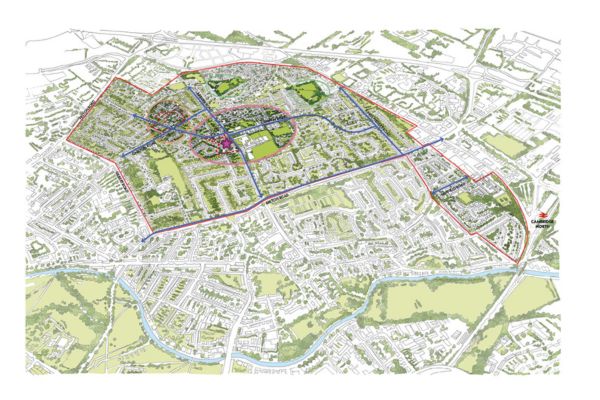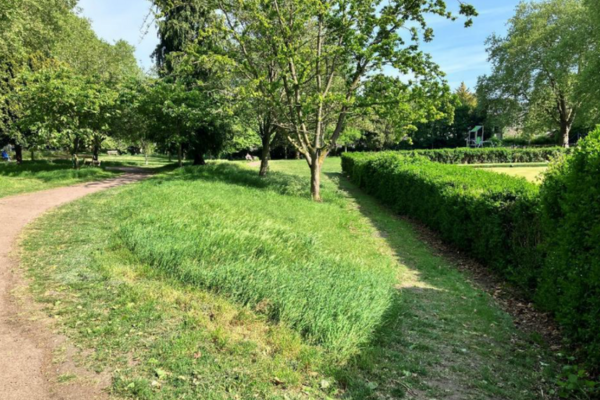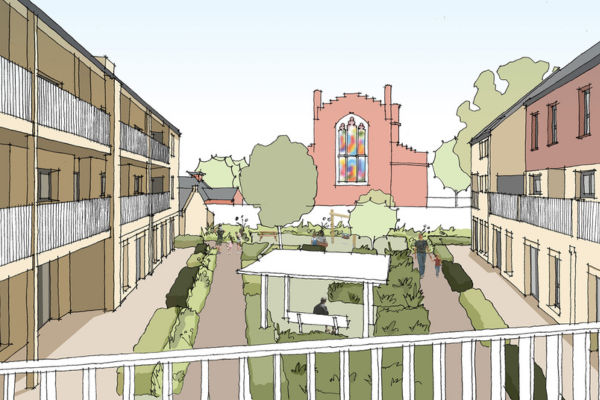Each of the following constraints relate to council policy and every application is considered in light of these constraints and policy.
Check for constraints on your property
You can carry out a property search in our online planning application system to find what constraints apply to your property. Look for details on the ‘constraints’ tab in the system.
Or, you can use the Planning Portal's service find out more about the types of work that do and don't need planning permission.
Flood risk
Each application is considered in light of any impact that development may have with respect to flooding.
Depending on the flood zone, the proposed development falls within, and/or the scope or type of proposals, applicants may be required to submit a flood risk assessment.
- If you're unsure if your proposal requires a flood risk assessment or not, the duty planning officer can help.
Further guidance is also available and includes:
- a strategic flood risk assessment [PDF, 1MB] - contains information regarding the risk of flooding to specific growth areas within Cambridge
- the Environment Agency website - contains information regarding flooding and proposed development
- the Communities and Local Government website - contains information regarding flooding considerations and the planning process, including the National Planning Policy Framework and the National Planning Practice Guidance
Air safeguarding zones
Air safeguarding zones potentially restrict new development in Cambridge and are in place as a result of Cambridge Airport's role as a contractor for the Ministry of Defence. These safeguarding zones are mentioned in paragraph 8.33 of the supporting text to the policy in the Cambridge Local Plan 2006.
Marshall of Cambridge, the airport's owner has provided information on necessary height constraints to the Council and this is mapped by the Council as a constraint layer for use in relation to planning applications. The PDF document provided indicates the areas where restriction on building heights may be required in order to allow the airport to continue to operate safely. This is based on Ordnance Survey data.
In the light of the data held by the Council on height restrictions, Marshall is consulted on planning applications as a matter of course. In the event of their objection to any planning application, this is taken into account in decision- making.
Contaminated land
Contaminated land is a material consideration under the land use planning process.
Investigation is needed when development is proposed on previously developed land to ensure that any potential contamination is identified and dealt with before development.
- Go to our land pollution page for more information.
Tree preservation orders
Trees can be protected by a tree preservation order. This generally makes it an offence to cut down, top, lop, uproot, wilfully damage or wilfully destroy a tree without our permission. Contact us if you’re unsure whether a tree is protected under this order.
Read more about trees on development sites – those not protected by Tree Preservation Orders – and Policy 4/4 under the Local Plan 2006.
Conservation areas
Conservation areas have 'special architectural or historic interest' which makes them worth protecting and improving.
This may include features such as buildings, spaces and trees. If your development is within a conservation area you may need special permission to carry out any works.
- Find out more about conservation areas.
Applications are considered against policy 4/11 [PDF, 0.5MB] with respect to impact on conservation areas.
Listed buildings
Listed buildings are those buildings that the secretary of state for culture, media and sport has classified as of 'special architectural or historic interest'. If your development affects a listed building you may need special permission to carry out works.
- Find out more about the specific rules that apply to listed buildings.
Applications are considered in light of policy 4/10 [PDF, 0.5MB] with respect to effects on a listed building.
Article 4 directions
Article 4 directions allow us to restrict permitted development rights under the Town and Country (General Permitted Development) Order 1995 over an area or areas.
This is separate from restricting development rights through planning permission conditions.
- Article 4 directions exist within our boundaries – find out more about development in conservation areas.
Article 3 restrictions on permitted development rights
Article 3 directions detail restrictions on permitted development rights under the Town and Country (General Permitted Development) Order 1995.
Such permitted development rights can be restricted further under article 4 or through planning permission conditions.
The government provides guidance on permitted development rights for alterations or extensions to a house.
Visit the Planning Portal website to find out more about permitted development rights.
Glossary of planning terms
The Planning Portal Glossary is a summary of phrases relating to land use and planning matters in England only. It covers a variety of issues ranging from new development and regeneration, to conservation and environmental protection.



